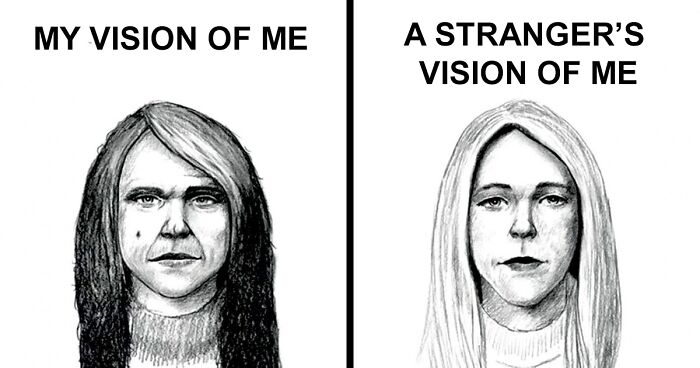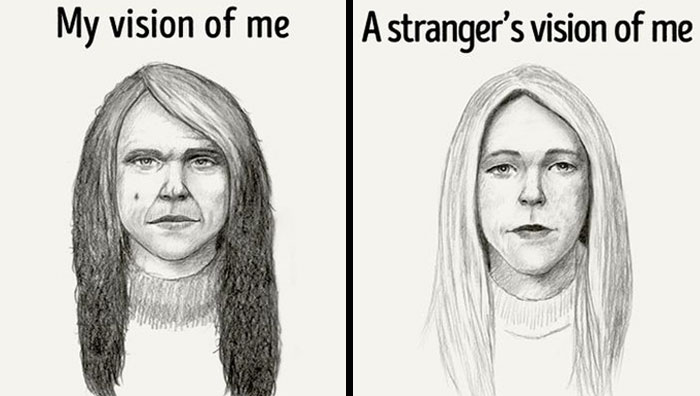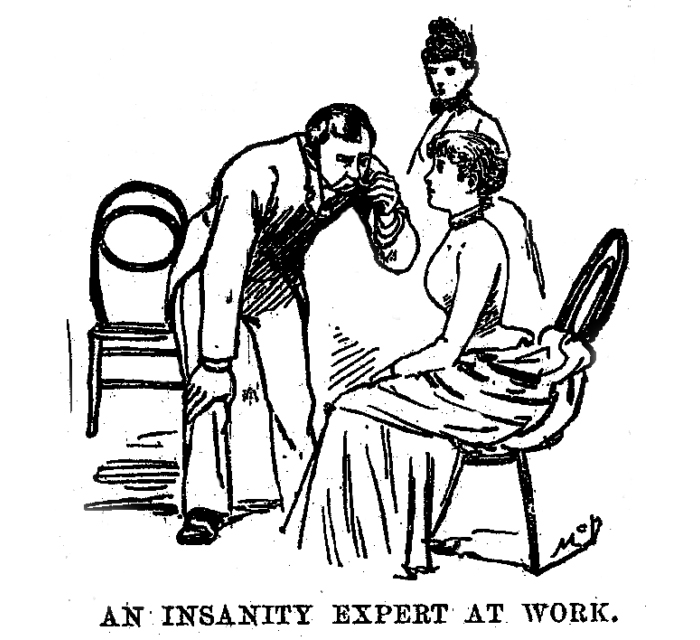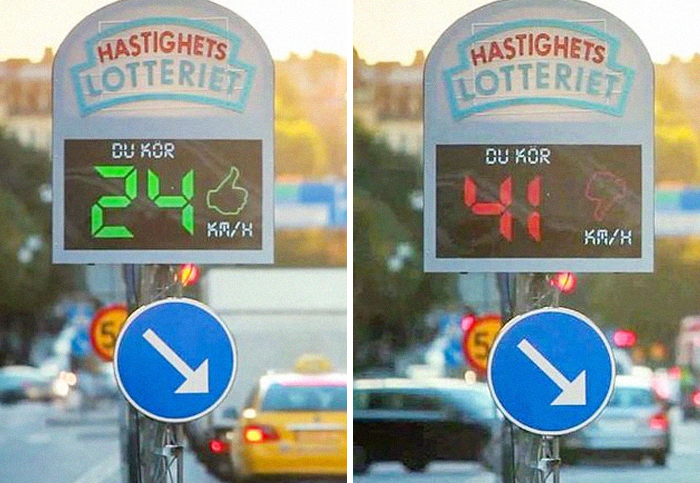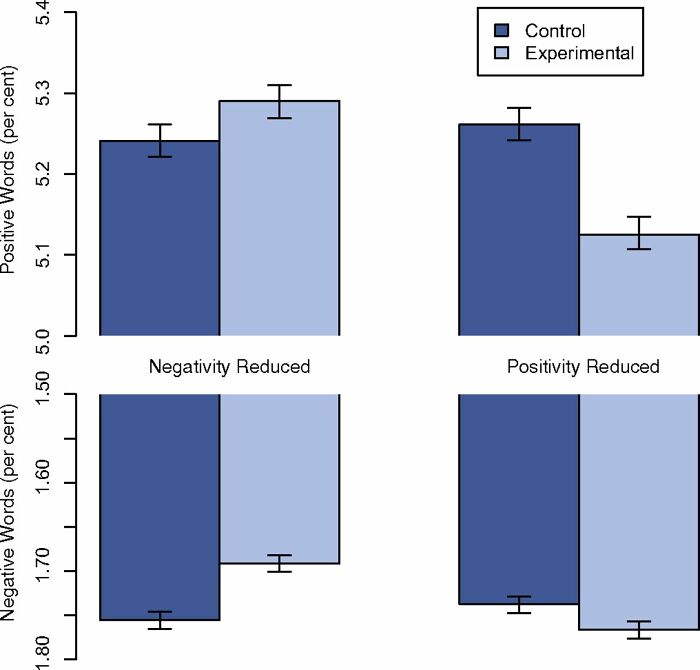Often, it feels like humans are one bunch of totally unpredictable beings. So finding out the answers to questions about our behavior requires some serious measures.
Would we go mad if we read too much bad news daily? Would we take the stairs over an escalator? Would we slow down on the roads if we get rewarded for driving safely? In order to find out, Bored Panda compiled some of the most interesting experiments on human behavior that brought various results, some of which were illuminating, and some—totally unexpected.
But at least we got a teeny tiny step closer to finding out just what’s going on in that odd and magical place called the brain.
This post may include affiliate links.
If A Field Is Left Unattended, Would People Steal Agricultural Produce, Or Would They Pay For It?
Idea: The self-service fields that run by the roads mean anyone is invited to pick whatever they please in the field, whether it’s fruits, vegetables, or flowers. There is no vendor to control the transactions. The sign with a price tag and a box to put money in is all there is to make a purchase for whatever it is that people picked in the fields.
Result: Not only were no thefts reported, but people would pay even more than the price tags asked.
Self-pick flowers are all over the German countryside, as well as little farm stands ranging from small huts to simply tables with everything from pumpkins to eggs to liverwurst on them with a money can. I assume this means most people are honest (or dishonest people stay in cities).
How Do People See Themselves, And How Are They Seen By Strangers?
Idea: The “Real Beauty Sketches” experiment conducted by Dove asked women to describe themselves to an FBI forensic artist, who drew their portraits based solely on the description. Then, strangers described the appearance of the same women, and the artist drew another set of portraits of them. Each participant was given two portraits of themselves that turned out to be radically different.
Result: The portraits based on the strangers’ descriptions were clearly more beautiful, happier, and more accurate. An average person tends to exaggerate her own flaws, while strangers see the appearance as a whole, focusing on positive features.
“What has stayed with me are the emotional reactions the women had when they viewed the composite sketches hung side by side. I think many of these brave women realized that they had a distorted self-perception that had affected parts of their lives in significant ways,” said the FBI forensic artist.
Carlsberg Social Experiment
Idea: In this social experiment by the Danish brewery Carlsberg, the subjects, unsuspecting couples out to watch a movie, walk into a crowded cinema. There are only 2 seats remaining, right in the middle, with each of the rest taken by a rather tough-looking and tattooed male biker.
Result: As the informal experiment (which was actually intended to be just an advertisement) unfolds, not all of the couples end up taking a seat, and upon seeing the bikers decide to leave immediately. Some couples do choose to take their seats however, and are rewarded with cheers from the crowd and a round of free Carlsberg beers. The experiment was a good example of why people shouldn't always judge a book by its cover.
Video
What Will Happen If All Foreign Products Are Removed From Supermarket Shelves?
Idea: As part of a campaign against xenophobia, the prejudice against people from other countries, supermarket 'Edeka' in Hamburg, Germany launched a social experiment. Supermarket employees removed all the foreign-made products from the shelves and left only those that were made within the country.
Result: Supermarket customers were greeted by empty shelves and helped raise awareness about how different and lower-quality life in Germany would be without cooperation with other countries. The experiment also shows that foreigners can add value to our lives even on a domestic scale.
Rosenhan Experiment
Idea: In his 1973 paper “On Being Sane in Insane Places”, psychologist David Rosenhan strongly criticized the psychiatric hospitals and the treatment the patients received there, but most of all, he criticized the quality of the psychiatric diagnosis. Rosenhan's stance was based on research conducted by himself and seven other experimenters who acted as pseudo-patients in different hospitals around the U.S. where they were all diagnosed with psychiatric disorders.
To be admitted into the hospitals, the pseudo-patients complained about auditory hallucinations. After admission, however, they behaved perfectly normal, telling the medical staff in the hospitals that their hallucinations had disappeared.
Result: The medical staff in the hospitals still regarded the pseudo-patients as mentally ill and fed them antipsychotic meds.
The pseudo-patients would flush the medications down the toilet, and continue acting in a calm, rational fashion, writing down their observations of the staff and the other patients. However, they were still treated as having mental problems. Instead of investigating the issue, nobody regarded their behavior as normal, because apparently inside the walls of a psychiatric hospital, the only sane ones are the employees.
I wonder if Rosenhan had read Chekhov's "Ward No. 6".
The "Violinist In The Metro" Experiment
Idea: On 12th January 2007, about a thousand morning commuters passing through a subway station in Washington, D.C. were, without publicity, treated to a free mini-concert performed by violin virtuoso Joshua Bell, who played for approximately 45 minutes, performing six classical pieces (two of which were by Bach), on his handcrafted 1713 Stradivarius violin (for which Bell reportedly paid $3.5 million).
Result: Only 6 people stopped and stayed to listen for a while. About 20 gave him money but continued to walk their normal pace. He collected $32. When he finished playing and silence took over, no one noticed it. No one applauded, nor was there any recognition. No one noticed that one of the best musicians in the world had played one of the most intricate pieces ever written with a violin worth 3.5 million dollars. The experiment raised some interesting questions about how we not only value beauty, but extent that which the setting and presentation make a difference. Three days earlier, Bell had played to a full house at Boston’s Symphony Hall, where seats went for over $100. (Source: Snopes)
What Will Happen If A Piano Staircase Is Installed Near An Escalator?
Idea: In another experiment from Volkswagen’s Fun Theory campaign, a regular staircase was replaced with a musical one. By stepping on the stairs, a person would play their own melody on a gigantic piano. The idea was to make people take the stairs instead of an escalator.
Result: The musical stairs, which were right next to an escalator, were used 66% more than normal as people took their time playing a tune. The idea quickly blew up around the globe and became installed in Kuala Lumpur, Seoul, San Francisco, Mexico City, Sarajevo, Vienna, and other cities.
How Much Are We Alike?
Idea: The travel search company Momondo asked 67 people from all over the world to take a DNA test. They wanted to prove that people have much more in common with other nationalities than one would think. Most participants were absolutely confident in their genetic roots, and some even had a level of prejudice against other nations.
Result: It turned out that not one of the total 67 people were purely one race or ethnicity. The experiment challenged participants’ beliefs about their and other peoples’ identities. Some participants were so impressed with the results they suggested running the same experiments as a way to get rid of xenophobia, racism, and national extremism.
Smoke Filled Room Experiment
Idea: This experiment had people alone in a room filling out a questionnaire, when smoke starts coming from under the door. What do you do? You would get up and leave, tell someone in charge and do so without hesitation, right? Now imagine the same situation, except that you are not alone, you are with several other people who don't seem to care about the smoke. What do you do now?
Results: When alone, 75% of people reported the smoke almost immediately. The average time to report was 2 minutes of first noticing the smoke. However when two actors were present, who were working with the experimenters and told to act as if nothing was wrong, only 10% of the subjects left the room or reported the smoke. 9 out of 10 subjects actually kept working on the questionnaire, while rubbing their eyes and waving smoke out of their faces. The experiment was a great example of people responding slower (or not at all) to emergency situations in the presence of passive others. We seem to rely heavily on the responses of others even against our own instincts. If the group acts as if everything is OK then it must be, right? Wrong. Don't let the passivity of others result in your inaction. Don't always assume that someone else will help, that someone is specified to take action on behalf of others. Be the one to take action!
How Does Music In A Taxi Affect Passengers?
Idea: Our surroundings and environment can affect how we (re)act. What's left to determine is to what extent. A taxi driver changed the music in his car, then noted how this affect his passengers' behavior, as well as his rating on the taxi app. The driver conducted his mini-experiments in week-long stretches; he'd switch up the music after 7 days. The results might just surprise some of you Pandas.
Result: The taxi driver noticed that his rating on the app dropped and rose depending on the type of music he was playing inside the cab. Rock music and retro songs caused his rating to fall. However, rap music affected his rating the most negatively. And while some customers enjoyed older hit songs, most people enjoyed a combination of classical music with a dash of rock. In the end, the taxi driver decided to play just classical music in his cab. That's because it gave his clients the most positive emotions and fattened up his wallet as a result: after all, happy customers leave better tips and reviews.
What Will Happen If Some Drivers Are Penalized And Others Are Rewarded?
Idea: The “Fun Theory” campaign from Volkswagen aimed at getting people to change their behavior and do the right thing.
Part of the campaign was the speed camera lottery, which meant that when a car passed a specific crossing, the speed camera would take a picture of it and measure its speed. If the driver was above the speed limit, they would get a fine. But interestingly, the fine fund was used to cover the lottery price for obedient drivers.
Result: Previous to the speed camera lottery, the average speed on this part of the road was 20 miles per hour. After its launch, the speed was reduced by 22% to 15 miles per hour since drivers were much more motivated not to exceed the speed limit. As a result, The Swedish National Society for Road Safety installed a few such speed cameras along their national highways.
How To Unite People With Different Views?
Idea: In a small scale social experiment by Heineken, as part of their ad campaign, 3 pairs of complete strangers with (secretly) wildly-differing views went to a warehouse. There, they built various constructions in pairs and asked each other questions that were prepared in advance by the event organizers. In the end, everyone finds out that their partner had completely opposite beliefs than their own. Everyone then decides if they want to talk to their partner over a bottle of beer.
Result: Among the 3 pairs of participants there was a supporter of the climate change theory and an skeptic; a feminist and a man holding conservative views; and a transgender individual, as well as a man against gender reassignment. In the end, friendship and curiosity prevailed, as every single person decided to drink a beer together, chatted, got to know each other, and deepened their knowledge about the questions they thought they had all figured out.
Video
False Memory Experiment
Idea: In 1974, Elizabeth Loftus and John Palmer tried to investigate the effects of language on the development of false memory. The experiment involved two separate studies.
In the first test, 45 participants were randomly assigned to watch different videos of a car accident. The videos had shown collisions at 20 mph (32 km/h), 30 mph (48 km/h) and 40 mph (64 km/h). Afterwards, participants filled out a survey, which asked the question, "About how fast were the cars going when they smashed into each other?" The question always asked the same thing, except the verb used to describe the collision varied. Rather than "smashed", other verbs used included "bumped", "collided", "hit", or "contacted". Participants estimated collisions of all speeds to average between 35 mph (56 km/h) to just below 40 mph (64 km/h). If actual speed was the main factor in estimate, it could be assumed that participants would have lower estimates for lower speed collisions. Instead, the word being used to describe the collision seemed to better predict the estimate in speed rather than the speed itself.
The second experiment also showed participants videos of a car accident, but the phrasing of the follow-up questionnaire was critical in participant responses. 150 participants were randomly assigned to three conditions. Those in the first condition were asked the same question as the first study using the verb "smashed". The second group was asked the same question as the first study, replacing "smashed" with "hit". The final group was not asked about the speed of the crashed cars. The researchers then asked the participants if they had seen any broken glass, knowing that there was no broken glass in the video. The responses to this question had shown that the difference between whether broken glass was recalled or not heavily depended on the verb used. A larger sum of participants in the "smashed" group declared that there was broken glass.
Result: In this study, the first point brought up in the discussion is that the words used to phrase a question can heavily influence the response given. Second, the study indicates that the phrasing of a question can give expectations to previously ignored details, and therefore, a misconstruction of our memory recall. This indication supports false memory as an existing phenomenon.
What Will Happen If Network Users Are Given Freedom Of Actions And A Little Bit Of Free Space?
Idea: A creative collaborative project on Reddit invited internet users to draw on a blank online canvas by choosing pixels and changing their color. In order to color another pixel, each user had to wait for a 5-minute 'cooldown' to end or had to act as part of a group. While it might sound complicated, it led to a group of redditors, 'creators,' banding together to create intricate drawings. Meanwhile, other groups painted different parts of the blank canvas with the same color. So-called 'guardians' also sprang up who saw it as their role to 'protect' the canvas from any destructive misconduct.
Result: At the start of the 72-hour-long project, the 'creators' let their creativity and imagination loose to create complex drawings. All with the help of the 'guardians' who protected their artistic endeavors. Unfortunately, things didn't last. Power corrupts and absolute power corrupts absolutely. The 'guardians' started to pick and choose which drawings to protect and which ones to leave open to the destructive forces of chaos. Eventually, this led to in-fighting. Some redditors began painting random pixels black and wreaking havoc where they could. However, just like a forest fire, this opened up the space for new drawings and creations.
OMG, I think I found that some years ago! I remember being in shock about how good the drawings were, unfortunately, mine was destroyed
What Will Happen If People Start Reading Bad News Every Day?
Idea: 689,003 Facebook users participated in a social experiment during which researchers wanted to see what would happen if people started reading bad news every day. For an entire week, some users had to view news posts which had negative information, some of which were incredibly stressful emotionally. The opposite was also tested out by using positive news instead of negative posts.
Result: Like a lot of us instinctively predicted, reading lots of negative news over 7 days changed Facebook users' behavior online. Not only were they more prone to posting similar information as in the negative news more often, they were also more likely to emphasize negative emotions. Meanwhile, positive news stories made people feel happier, act more compassionately and kindly towards others. In other words, the news that we consume on social media shapes how we react because, on some level, we feel that what we see and read happens to us in reality.
How Much Does An Opinion Cost- A Little Or A Lot?
Study Conducted in 1957 at Stanford University
Idea: Cognitive dissonance is a concept that refers to a situation involving conflicting attitudes, beliefs, or behaviors. This conflict produces an inherent feeling of discomfort leading to a change in one of the attitudes, beliefs, or behaviors to minimize or eliminate the discomfort and restore balance.
It was first investigated by Leon Festinger, after an observational study of a cult that believed that a flood will destroy the Earth. This study inspired an intriguing experiment, conducted by Leon Festinger and James Merrill Carlsmith. The researchers asked the participants to perform a series of dull tasks (such as turning pegs in a pegboard for an hour). Participants' initial attitudes toward this task were highly negative. They were then paid either $1 or $20 to tell a participant waiting in the lobby that the tasks were really interesting.
Result: Almost all of the participants agreed to walk into the waiting room and persuade the next participant that the boring experiment would be fun. When the participants were later asked to evaluate the experiment, the participants who were paid only $1 rated the tedious task as more fun and enjoyable than the participants who were paid $20 to lie. Being paid only $1 is not a sufficient incentive for lying and so those who were paid $1 experienced dissonance. They could only overcome that dissonance by coming to believe that the tasks really were interesting and enjoyable. Being paid $20 provides a reason for turning pegs and therefore, there's no dissonance.
Cognitive dissonance is one of the most powerful forces shaping our modern political landscape. Too many people shift their views based on group identity who independently wouldn't hold these views. Something to the effect of I'm a (political party) so I agree that climate change is (party's view).
Study Conducted In 1977 At Stanford University
Study Conducted in 1977 at Stanford University
Idea: A social psychology professor at Stanford University named Lee Ross conducted an experiment that focuses on how people can incorrectly conclude that others think the same way they do, or form a “false consensus” about the beliefs and preferences of others.
In the first part of the study, participants were asked to read about situations in which a conflict occurred and then were told two alternative ways of responding to the situation. They were asked to do three things:
- Guess which option other people would choose;
- Say which option they themselves would choose;
- Describe the attributes of the person who would likely choose each of the two options.
This phenomenon is referred to as the “false consensus effect”, where an individual thinks that other people think the same way they do when they may not.
The second observation coming from this study is that when participants were asked to describe the attributes of the people who will likely make the choice opposite of their own, they made bold and sometimes negative predictions about the personalities of those who did not share their choice.
Google "The psycology of persuasion" and you'll get heaps more. ;)
Load More Replies...Google "The psycology of persuasion" and you'll get heaps more. ;)
Load More Replies...
 Dark Mode
Dark Mode 

 No fees, cancel anytime
No fees, cancel anytime 



